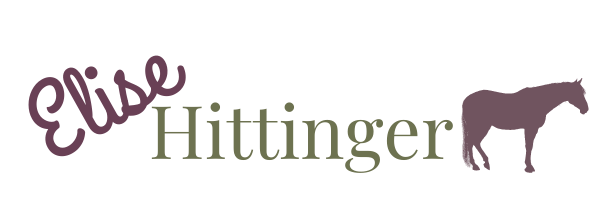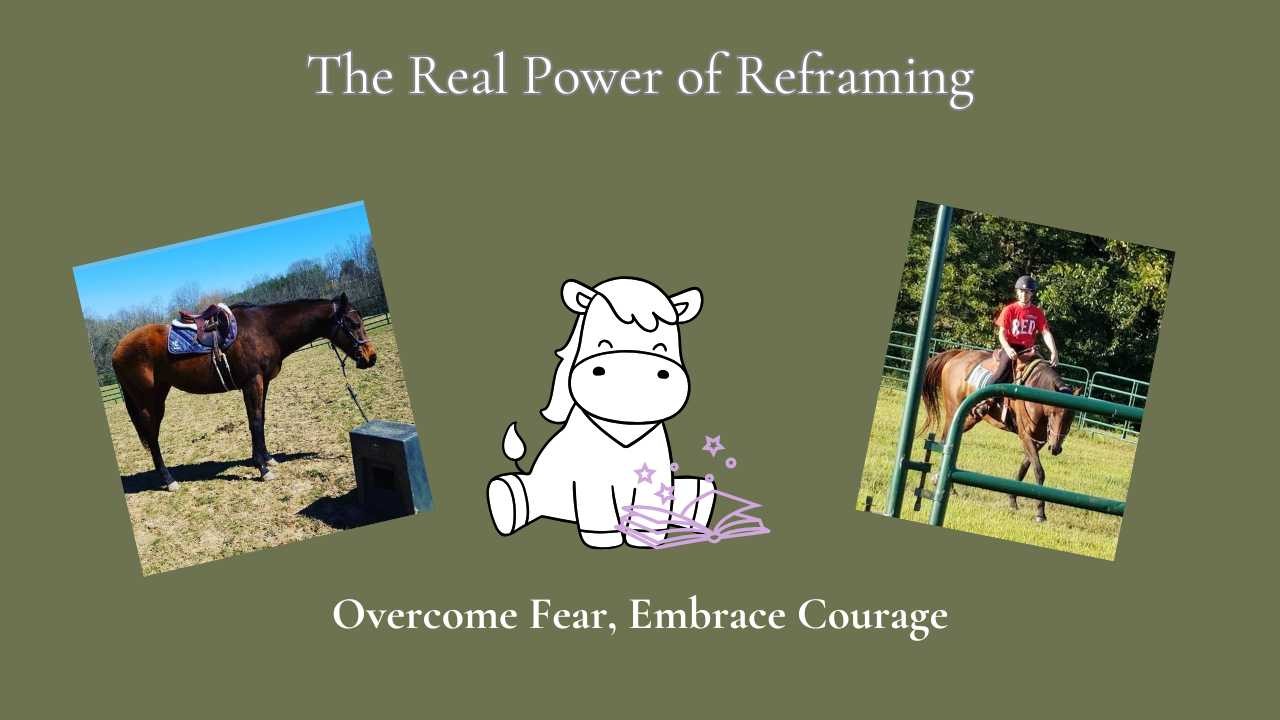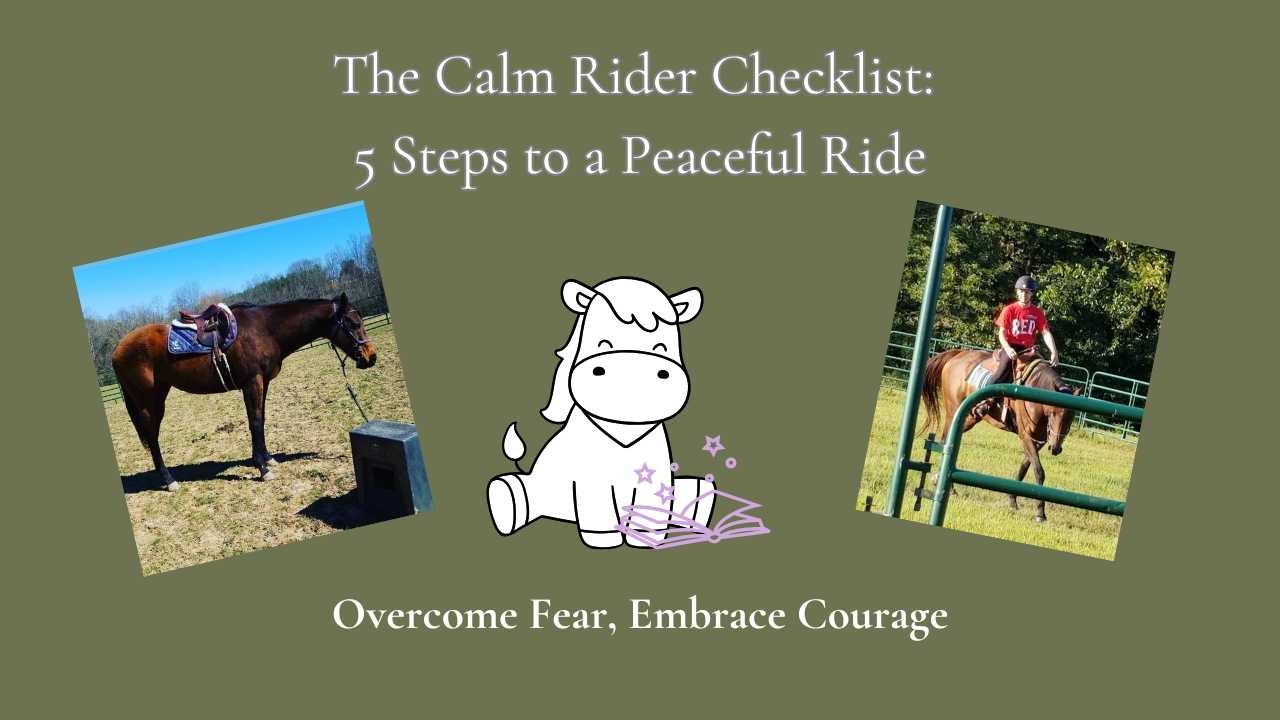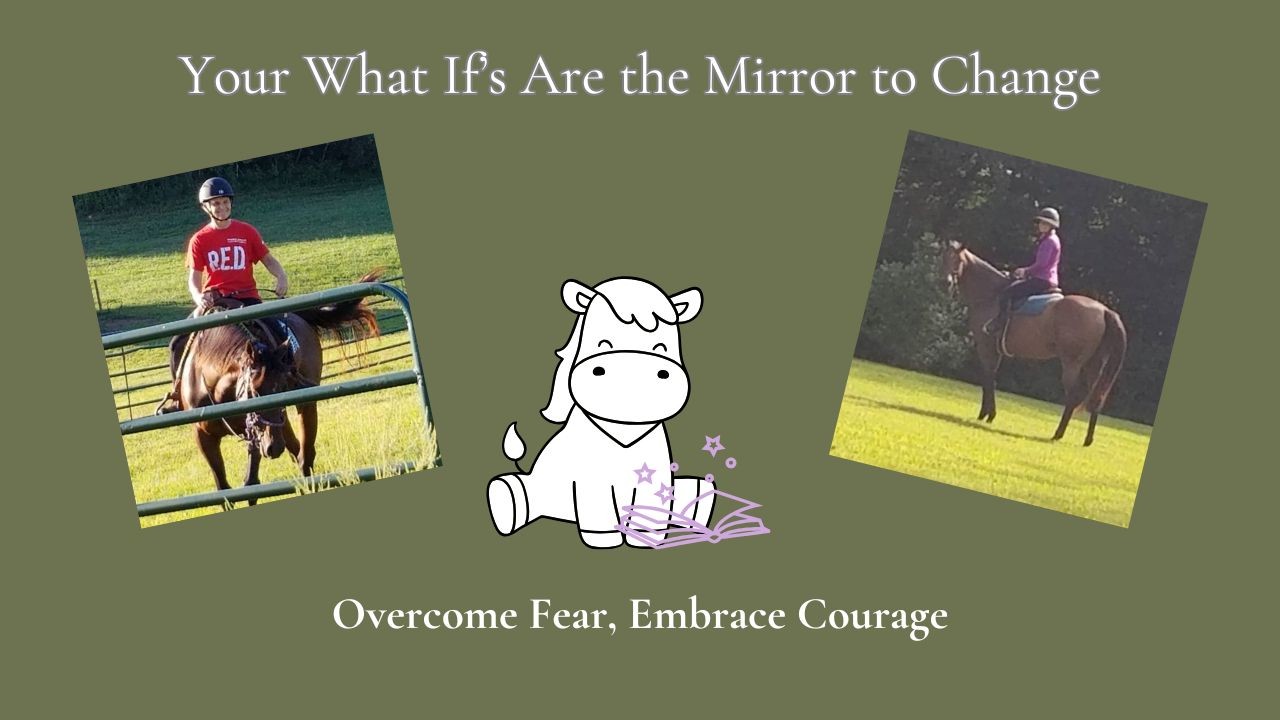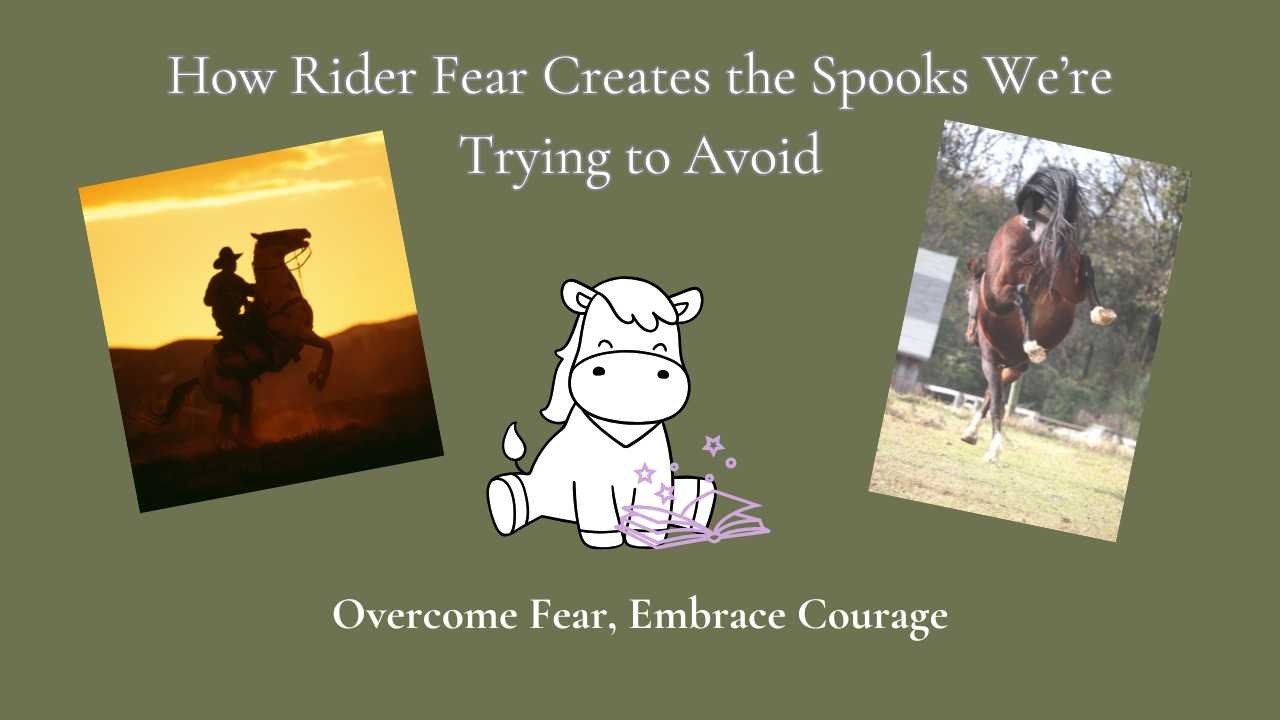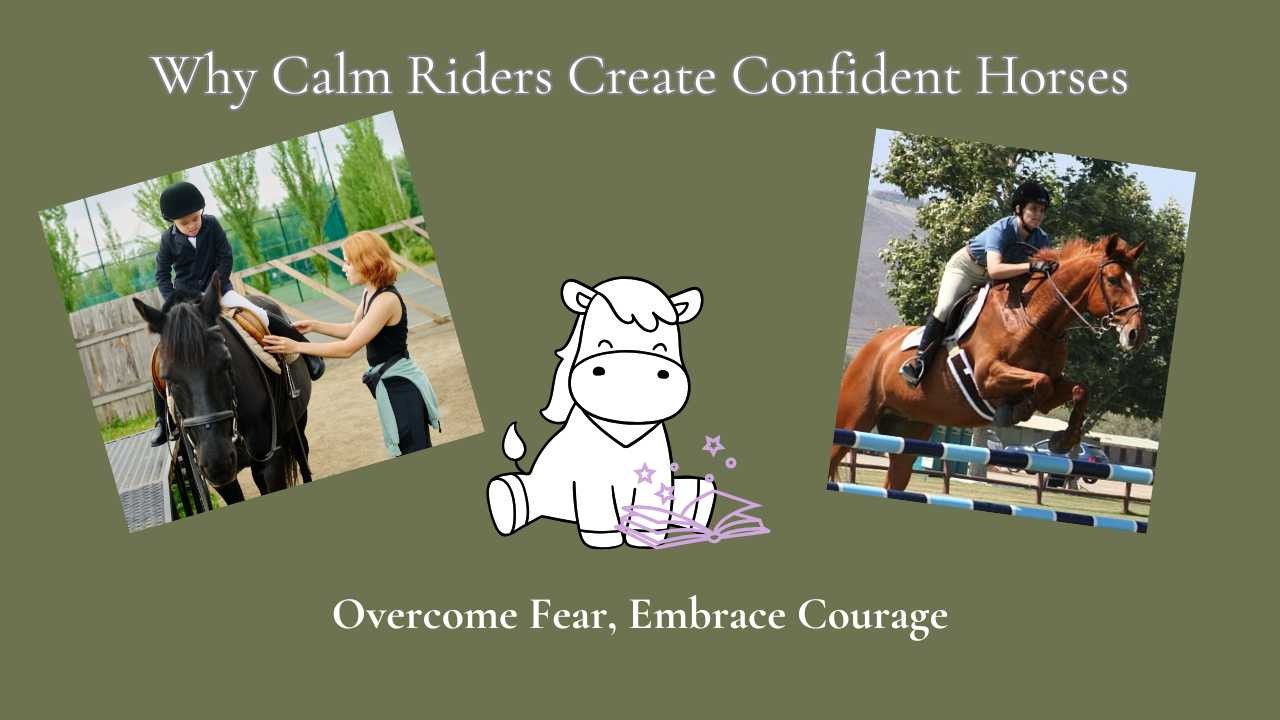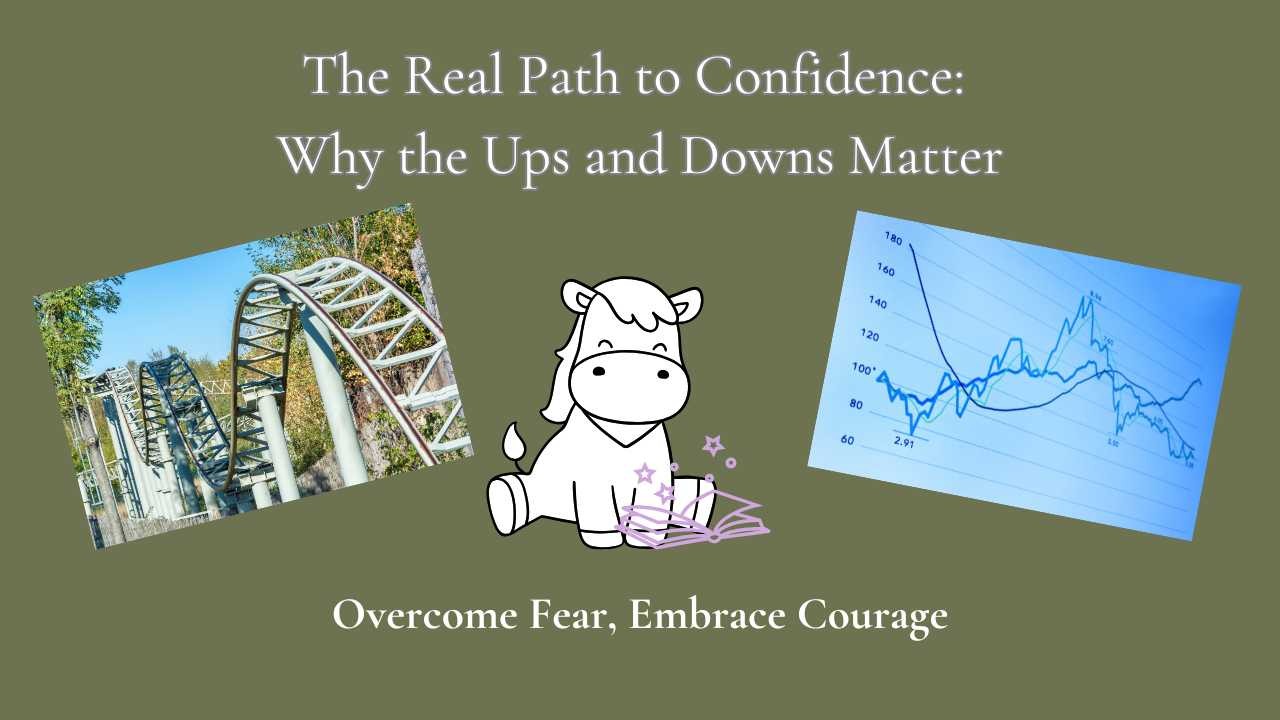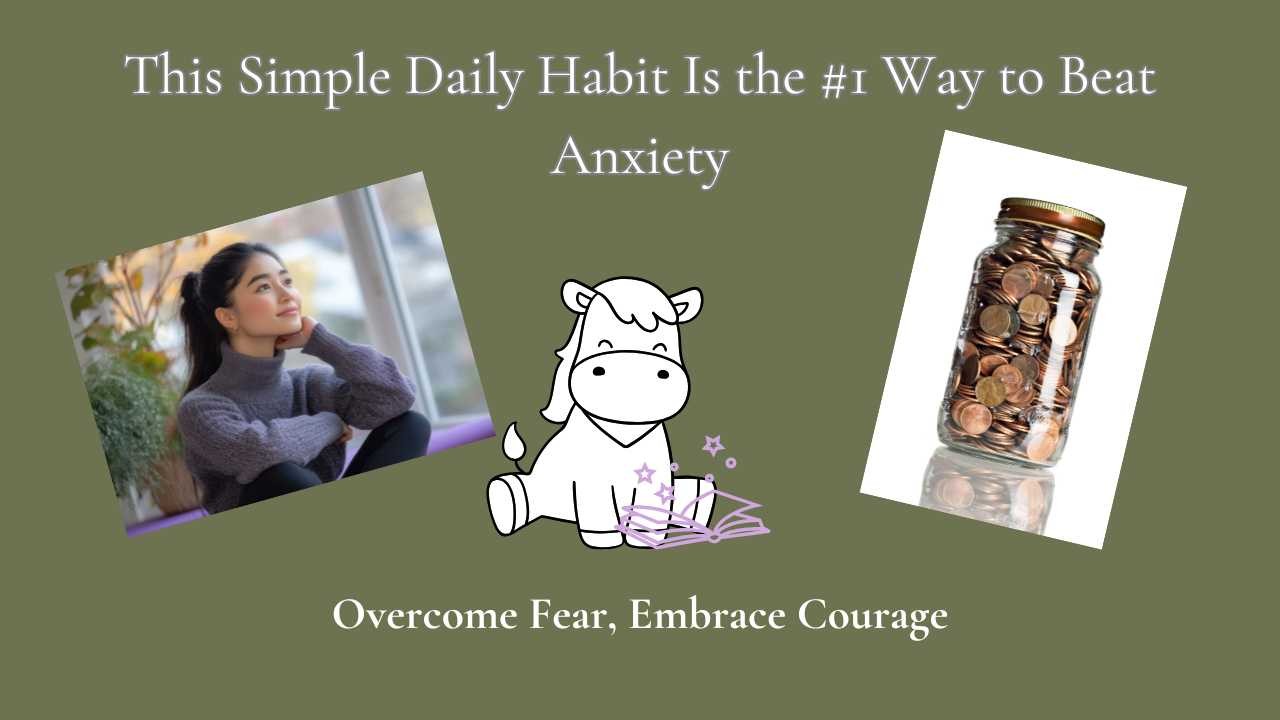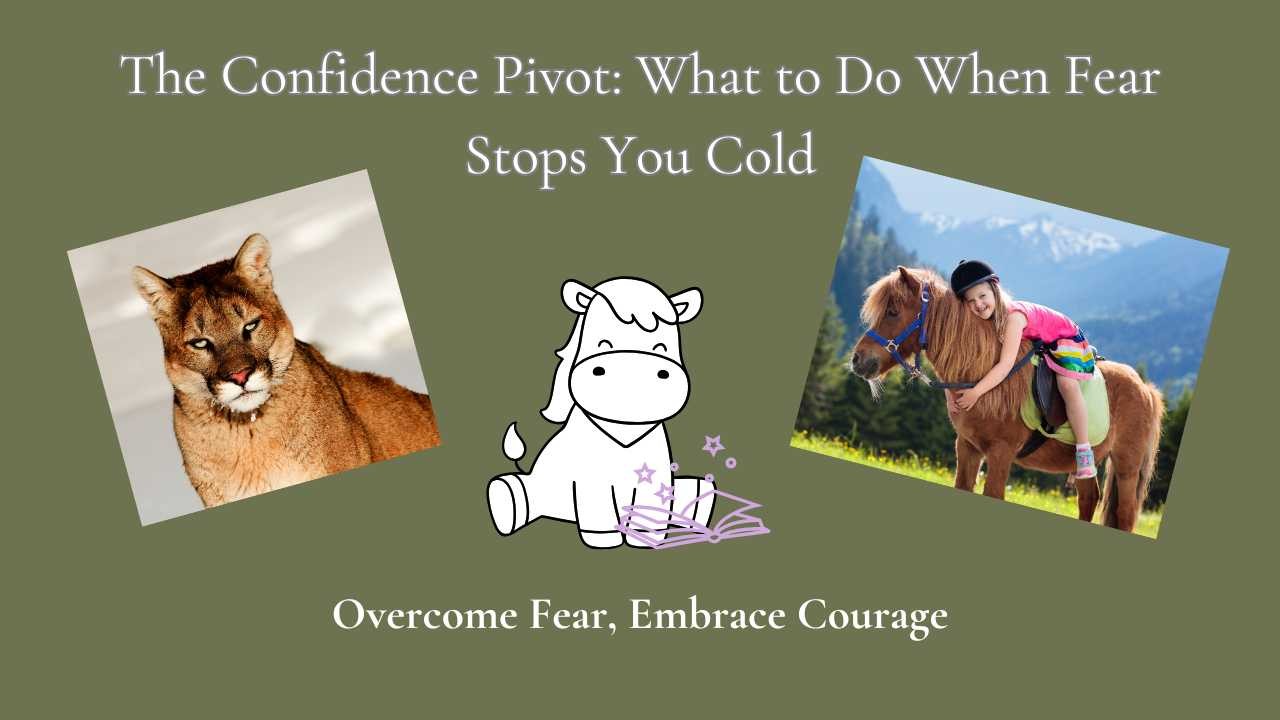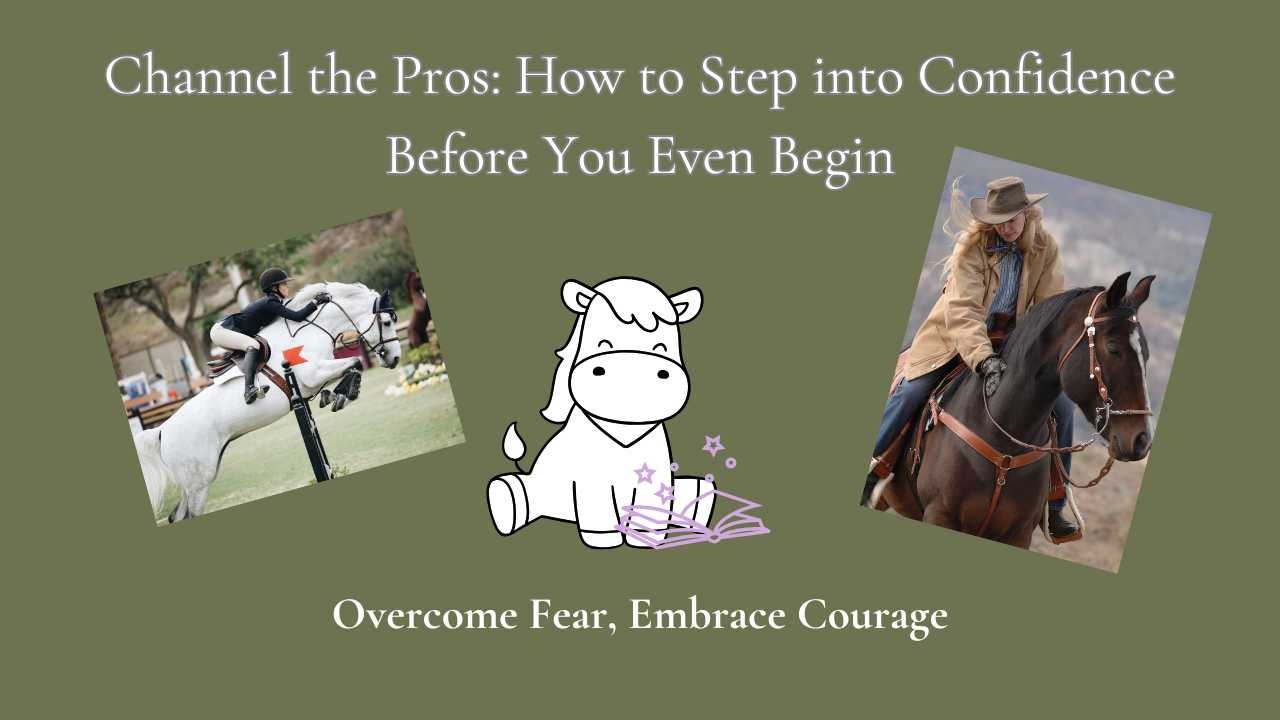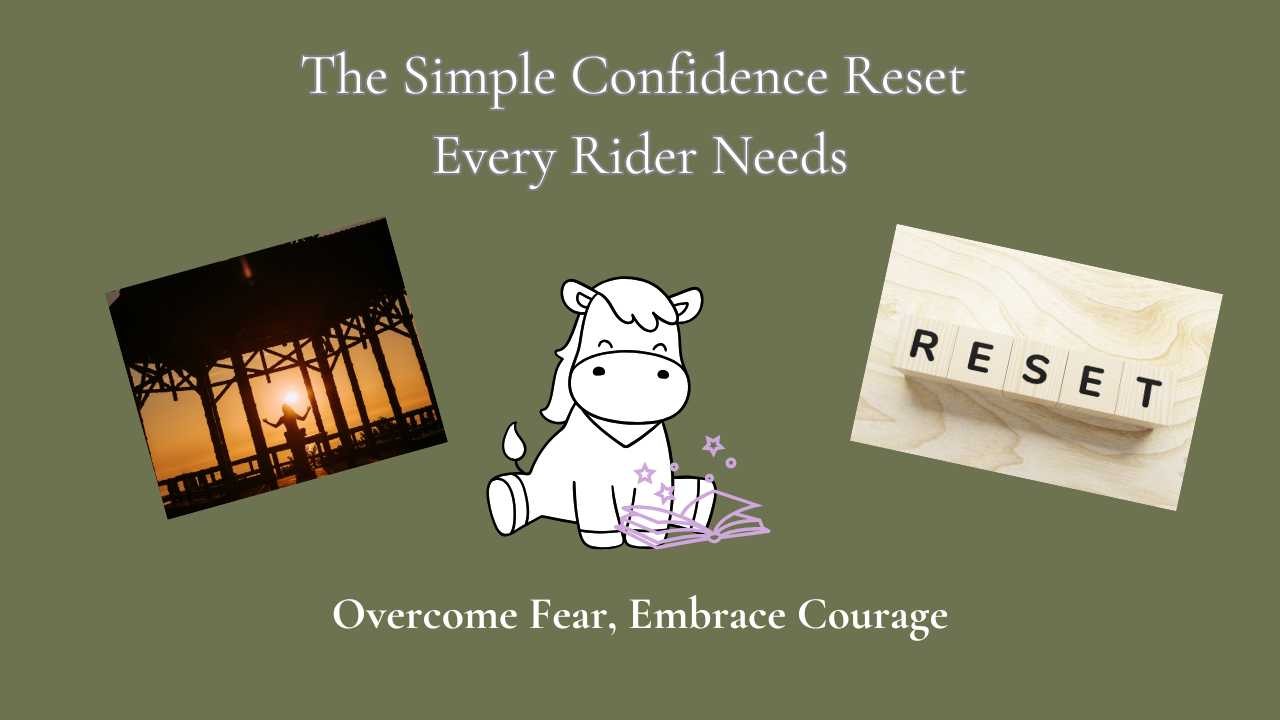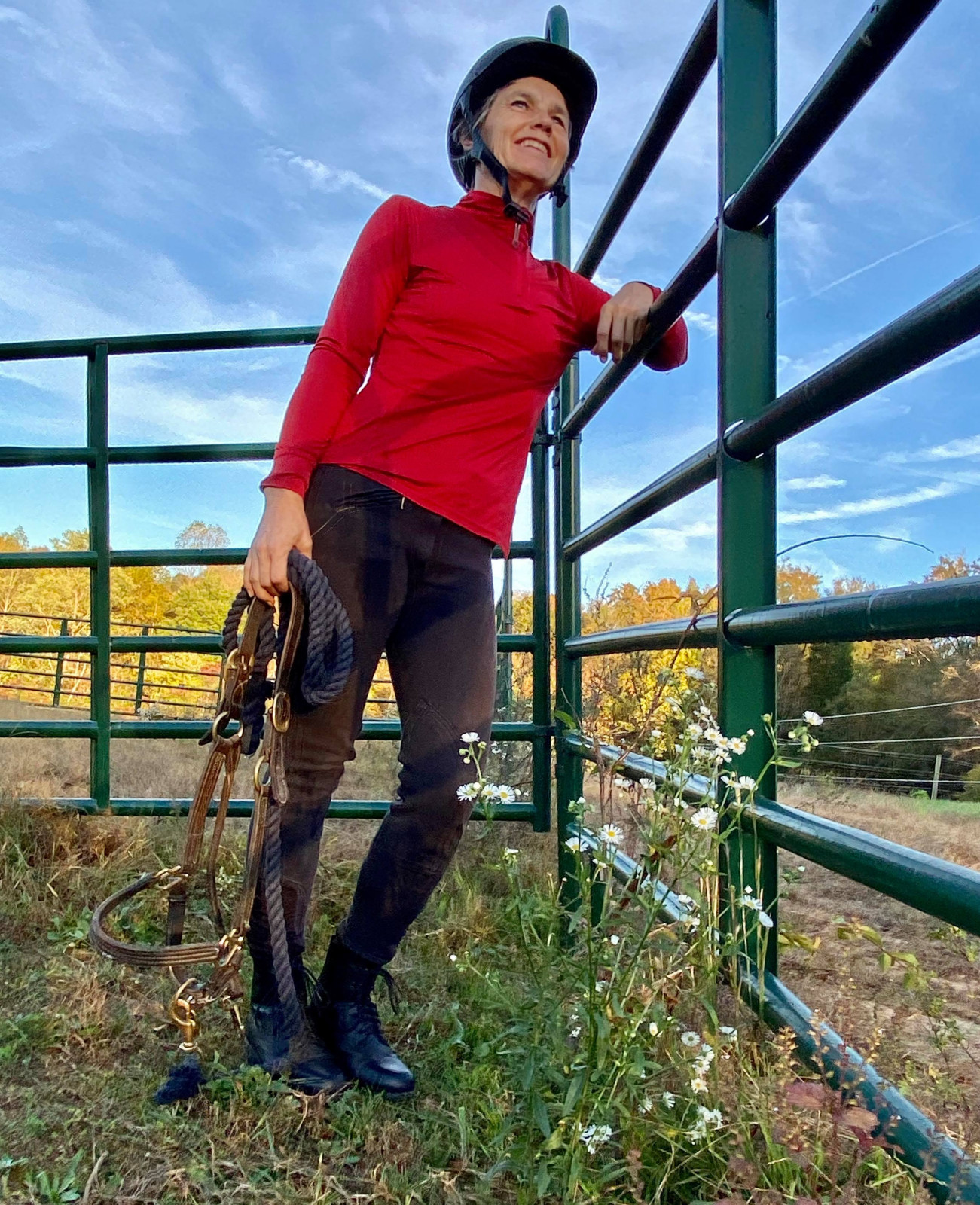
In today’s world, it’s easy to fall into the trap of constantly measuring ourselves against others. I remember riding in a clinic, with several talented young riders, and I couldn’t help but feel defeated as I tried to keep up. Despite my frustration, I completed every jump as instructed, and the jumping itself felt great. But the tension of trying to be perfect—of comparing myself to others—was overwhelming.
We fear being judged for not being perfect, and this fear creates tension. In riding, it’s common to feel like you’re being judged by trainers, fellow riders, or even your own past expectations. This fear can hold us back, preventing us from fully enjoying the journey. But the truth is, relaxation and peace come from embracing your own unique journey, not by measuring yourself against someone else. It is all about you and your horse and improving that relationship.
When we focus too much on what others think, we become paralyzed by their opinions. We might ask ourselves: "Am I doing this right? What will they think? What if I fail?" This mindset, centered on judgment and perfection, adds stress and stops us from truly enjoying the process. Instead of celebrating progress, we get caught in a cycle of fear and self-doubt.
The truth is, you don’t need to be perfect. Perfection is an illusion. What matters is that you’re growing, learning, and trying. Every step forward, no matter how small, is progress. By pursuing your riding goals, you’re doing something extraordinary—many people never take that leap. But you? You’re out there riding, pushing forward, and that’s something to be proud of.
Relaxation comes when we let go of the need to meet external standards and focus on personal growth. You are unique. Your path is unique. As you continue to grow, the tension from judgment will fade. Celebrate small victories—whether it’s mastering a new skill or overcoming fear—and you’ll find more confidence and ease in the saddle. You’re not here to be perfect; you’re here to be authentic, present, and to follow your dreams, no matter where they take you.
So, the next time you feel the fear of judgment creeping in, remember this: you are enough just as you are. Your journey is yours alone. Relax into that truth and let go of the need for perfection. You’re already doing something incredible by showing up and striving for more and riding your horse.
If you're ready to let go of the pressure of perfection and embrace your unique journey, I invite you to join my Mind-Body Connection Webinar on January 25th, 2025. In this session, we’ll explore how to connect with your horse—and yourself—on a deeper level, helping you ride with more ease, confidence, and presence. Can't make it live? No worries! There is an option to purchase the replay.
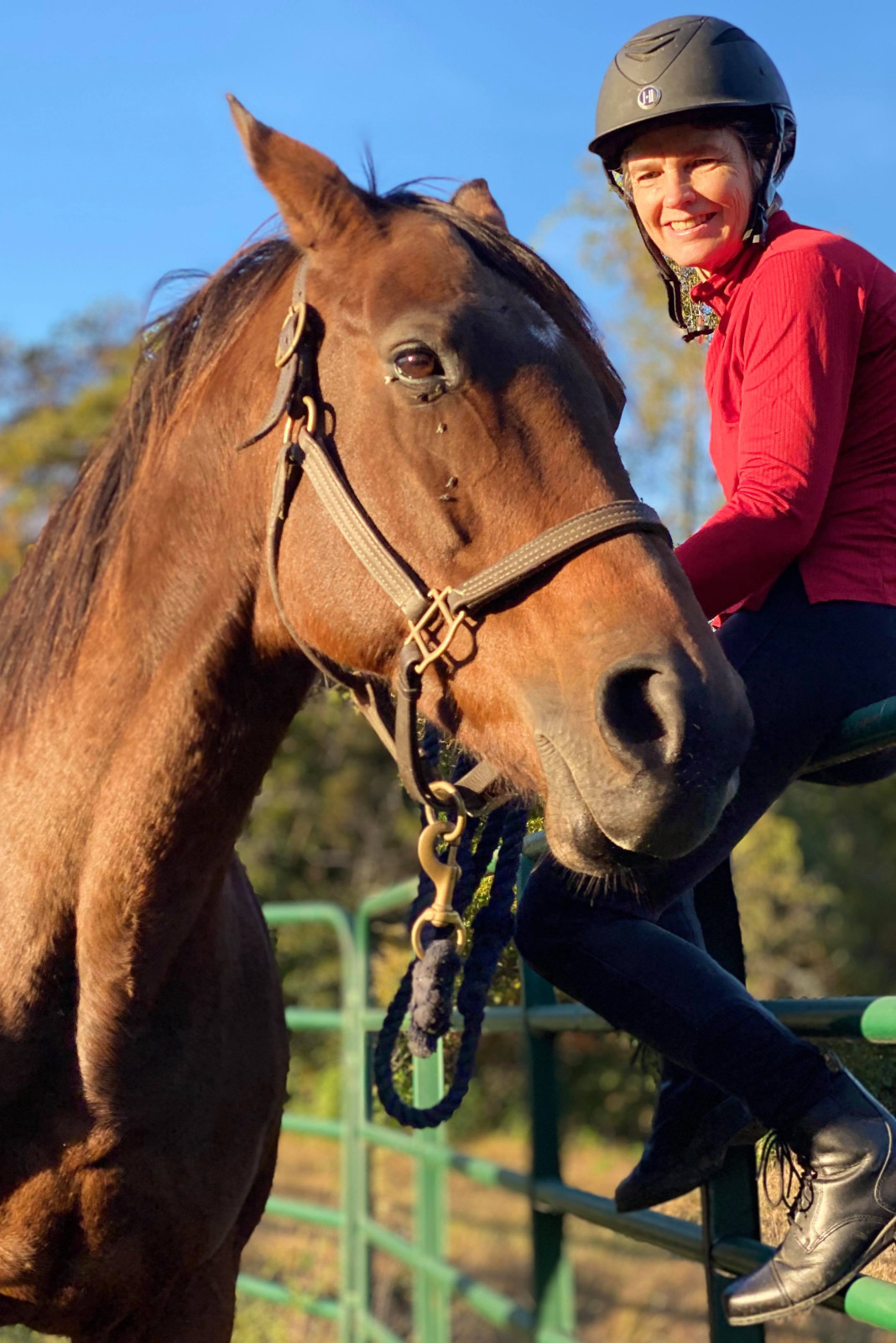
I was recently watching a video of a Disney Parade when something unexpected happened— a balloon string wrapped around the hind leg of a horse in the procession. While the aftermath of the incident is important, what struck me most was what was happening before the incident.
The handlers walking alongside the horse were checked out, mindlessly walking along, and the princess riding the horse seemed entirely absorbed in "being" a princess, not at all focused on the horse. In that moment, the horse was essentially alone, with no connection to the people around it. No one was in tune to the horse’s mind and body. The handlers weren’t engaged, the rider wasn’t present, and as a result, the horse became disoriented and fearful. This is a perfect example of the lack of mind-body connection, and it serves as a valuable lesson for all of us.
So, what can we learn from this?
1. Our Mind and Body Are Connected to Our Horse’s Mind and Body
When we ride, we must honor the fact that our mind and body are deeply connected to our horse’s mind and body. I often think of my horse as an extension of myself. My balance impacts the horse's movement, and my state of mind directly influences its behavior. The more present I am, the more relaxed my horse becomes, and together, our minds and bodies align to perform as a team. This connection helps reduce anxiety and keeps spooks to a minimum. Without it, the horse can easily spiral into panic, just as the horse in the parade did.
2. Engaging the Horse’s Mind Is Rewarding
Engaging your horse’s mind while riding not only helps prevent unexpected events but also creates a rewarding experience for both of you. Think of it like going to a shopping mall with a great friend— you’re not just getting from point A to point B, but you’re enjoying the journey together. Building that mental connection with your horse makes riding more enjoyable and deepens your partnership.
3. The Mind-Body Connection Is Something We Can Improve
Whether it’s strengthening your own mind-body connection or deepening the bond with your horse, this is an area we can always improve. Get curious about how different actions affect the connection. What happens if you tense up or slouch? How does your balance affect your horse’s movement? Try different approaches, explore how it feels, and see what works best for you both.
If you’re interested in learning more about the mind-body connection, I’ll be hosting a workshop on January 25th, 2025 (or you can catch the replay). You can find more details and register by clicking here!
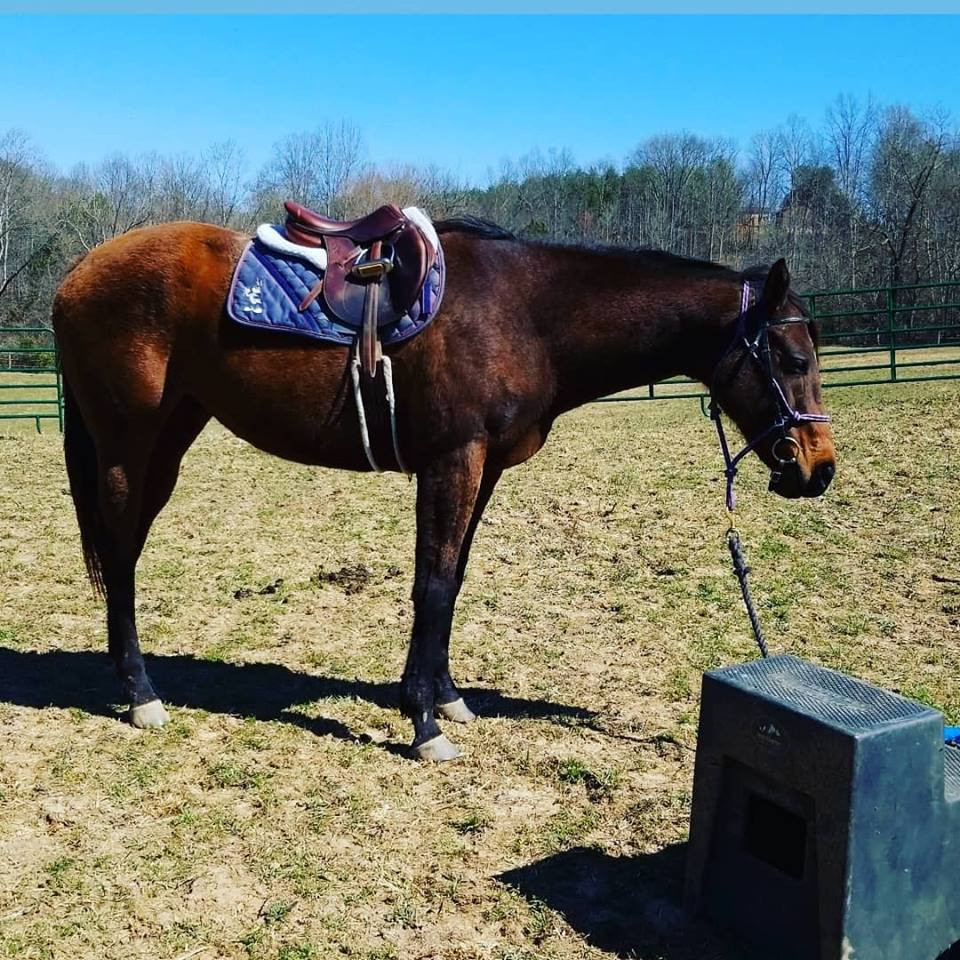 There I was, ready to ride—horse tacked up, mounting block in place. It was my first time riding outside the "fence" since my accident. I had reached this point countless times before but never quite managed to get my leg over the saddle. This time, I knew it was different. I had learned, prepared, and practiced. My horse was calm, waiting at the mounting block. I knew what to do. I had the tools. This time, I was going to "get back on the horse."
There I was, ready to ride—horse tacked up, mounting block in place. It was my first time riding outside the "fence" since my accident. I had reached this point countless times before but never quite managed to get my leg over the saddle. This time, I knew it was different. I had learned, prepared, and practiced. My horse was calm, waiting at the mounting block. I knew what to do. I had the tools. This time, I was going to "get back on the horse."I took four steps. And celebrated. I DID IT!
It’s a phrase we hear when facing setbacks, fear, or self-doubt: "Get back on the horse." But what does it really mean, especially in horseback riding or any personal challenge?
Getting back on the horse is more than a physical act. It’s a mental one—a commitment to face fear, overcome obstacles, and move forward, even when things don’t go as planned. It’s about having a plan for the contingencies that arise. After a fall or fearful experience, the challenge is not just physical—it’s rebuilding trust in yourself and your horse. It’s about practicing courage, resilience, and self-compassion. When we face fear, it's easy to let self-doubt take over. But fear doesn’t define us. Getting back on the horse is about taking action despite uncertainty and regaining control.
The first step? Acknowledge your fear. It’s okay to feel scared, vulnerable, or even angry. But instead of letting these feelings hold you back, recognize them as part of the growth process. Fear means you’re pushing your boundaries—and that’s how you grow.
The next step is building confidence—sometimes through small steps. Spend time with your horse, connect, and practice at a slower pace. Each small success builds your courage to tackle more challenging moments.
Getting back on the horse is a metaphor for life. It’s about trusting your strength, learning from past experiences, and stepping forward with renewed purpose.
Don’t let fear hold you back. Get "The Ultimate Riding Contingency Guide" for quick tips and techniques to handle unexpected situations and get back on track with confidence
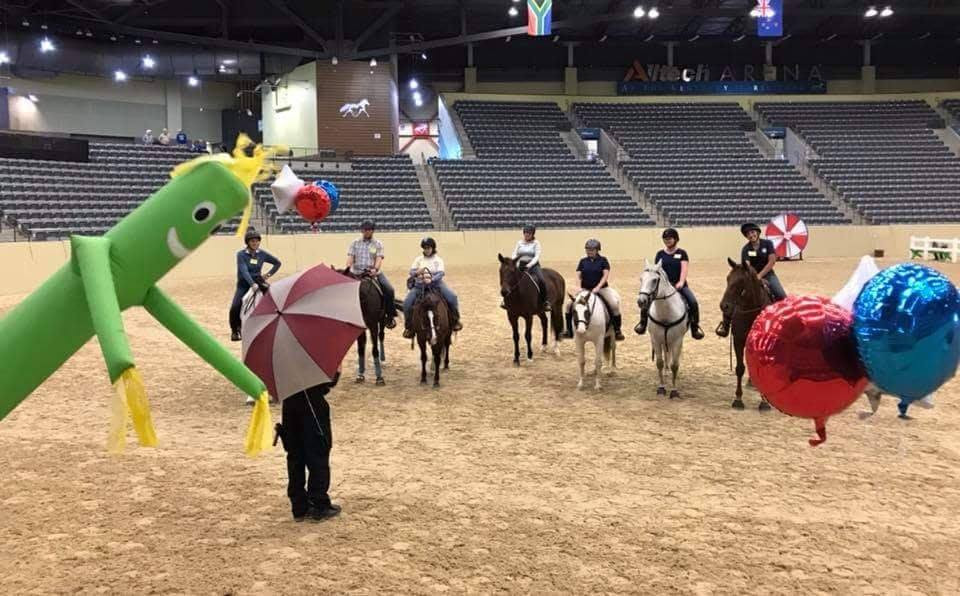
Transforming Fear Into Confidence: A Lesson from the Gauntlet
Sitting in a circle, I knew that three of us would be chosen to "run the gauntlet," a challenge involving two ex-Navy SEALs and a SEAL trainer who had been relentless with me all day. I was terrified of him. I’m small, and he was huge. It felt a lot like being with a horse that intimidates you.
When my turn came, I had to cross the room, passing all three men, who each controlled a third of the space. The first girl couldn’t make it past the first guy. She was bruised and humiliated. Watching this angered me deeply. Seeing her treated that way fired me up, and suddenly, fear wasn’t in charge anymore. I was angry—and that anger gave me confidence.
I crossed the gauntlet. The first two weren’t too difficult, but the trainer grabbed me. In a flash, I kicked behind his knees, bringing him down (he later needed stitches!). I finished.
This experience taught me a powerful lesson: anger, especially when directed at your fear, can fuel confidence. Confidence builds on itself, creating momentum for overcoming challenges.
As my mom would say, "Get up your gumption!" We all have it in us to conquer fear. This tool can be part of your toolbox for overcoming fear, whether you’re riding or facing any challenge.
3 Tips for Turning Fear into Anger:
1. Feel the Anger, But Don’t Act Out:
This is key. The anger you feel is energy, not something to direct at others. Think of it as a shield, giving you the courage to face your fear and take control of situations—like getting back on your horse.
2. Transform Your Fear:
Write down three things that make you anxious. Sit with those feelings, then turn them into anger. Ask yourself, "What would I do differently if I weren’t afraid?" Channel that anger towards the fear itself. (Be sure you're focusing on perceived fear, not legitimate dangers.)
3. Practice, Practice, Practice:
Start small. When you feel anxiety, flip it into anger. Find something about the situation to feel angry about. As you practice this, try it when approaching your horse or getting ready to trot or canter. Watch how your confidence shifts.
When you combine this anger with knowledge, you’ll be prepared for anything. Use my free guide, The Ultimate Riding Contingency Guide, to learn techniques for managing fear when riding—whether dealing with a rear, buck, bolt, or spook. It’s packed with insights from 50 years of experience to help you stay safe and in control.
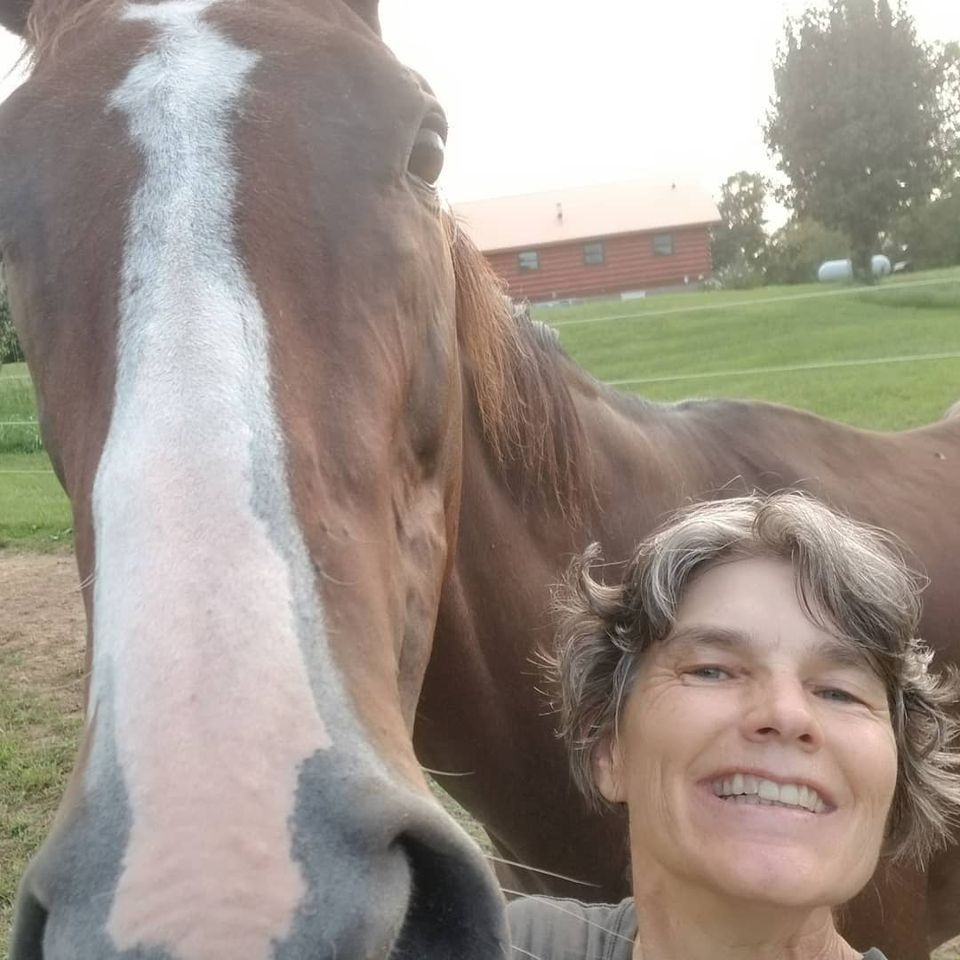
When Binky first arrived at the farm, she was terrifying! She bit me in the middle of the back when I didn’t even know she was there, and kicked my other horse over on top of me—not once, but TWICE. I became a timid, terrified ball of nerves around my own horse.
I even slid their food under the pasture fence because I was too scared to go in the pasture. We were about to go on vacation, and I realized I couldn’t have someone else take care of her until I worked on fixing myself first. Yes, fix me to fix her.
I made a decision to tackle my anxiety head-on. But how? I realized that Binky had become the leader, and the only way I could fix the situation was for me to step up and become the leader. I turned my fear into a mental shift: I became Binky—in my head. I knew that if I truly believed I was the leader, I could keep myself safe and reset her emotions to a calm state, while showing her I was in charge.
I used a flag on a dressage whip as my "ears and tail" and walked into the pasture with food, waving the flag like a lunatic.
It worked. Binky was shocked, ran off, and I spent the next few weeks working with her. She transformed into the sweetest mare, still in charge of the other horses, but now relaxed and content to let me lead.
Take a moment to assess your leadership with your horse. What areas do you feel timid or unsure? Start shifting that fear and anxiety into confidence. Horses don’t want to be the leader—they want to relax and have someone they trust take charge. But we have to earn it. We need to show them we can keep them safe and provide for them.
If you would like a little help developing a plan to improve your leadership and reduce your anxiety, set up a free call to see if I can help you out! Just click here for a 15-minute chat.
